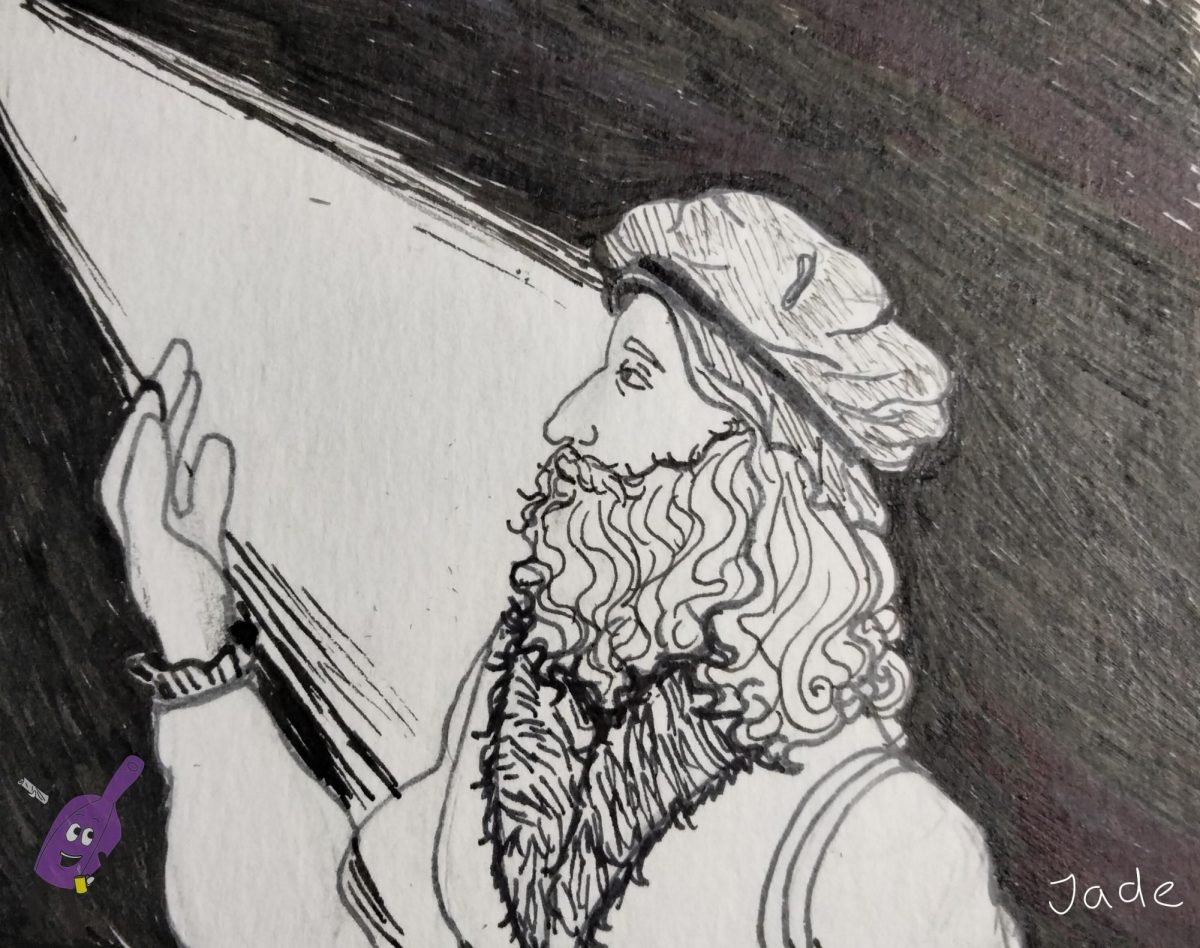This series is to express the beauty in people’s united struggles. Some good examples can be observed in history’s geniuses; throughout their life, they suffered and grudged past obstacles. And sometimes those obstacles made them reject all they’ve done, all they’ve been through.
So if these diamonds of people struggle, and agonize, why do we common folk expect not to get stuck, why do we tell ourselves to do better?
Vinci
Leonardo da Vinci was a love child between Ser Piero and Caterina di Meo Lippi. After a couple of years of life, Leonardo’s mom left to have another family.
Vinci received no formal education. The most he was taught was basic reading, writing, and math.
To develop Vinci’s artistic talent, Ser Piero positioned him to be Andrea del Verrocchio’s apprentice.
After a decade of apprenticeship, Vinci began his commissioned paintings in 1482; the first commission was The Adoration of the Magi, which, in a recurring theme, remained unfinished.
While being commissioned, Vinci’s curiosity led him astray from painting. Instead, his interest became the how of things and their application.
Vinci’s hobbies included dissection, field testing, and engineering.
He was especially talented in dissection. Without fixing or chilling the bodies, Vinci would still sketch accurate renditions of the soft organs. Then, as if it wasn’t enough, Vinci also discovered that the heart was the center of the blood system.
But his magnum opus has to be his descriptions of the coronary sinuses; no one else discovered them for the next 120 years (NIH).
When it comes to engineering, Vinci was a mountain; especially for military engineering. His tank was astounding, author Ran Ren states “ [it has ]features that are remarkably similar to those of modern tanks”. Such features include canons, and the ability to move in any direction.
Like a mother compared to her children, Vinci’s paintings lead over his hobbies; look at The Last Supper, the detail and strategy are impeccable.

Anonymous photo taken of the mural

Pretty faithful recreation of the mural, an untraceable author.
To begin, look at the details; the anatomical accuracy, the custom hand gestures, and the references. The body language of each disciple is exquisite; the chaos of the situation is tangible, and you can see the whole spectrum of emotion. It’s miraculous, especially considering that Vinci only did this with primitive technology.
Biblical references are everywhere throughout the piece; Judas and Jesus reaching for the same plate refers to Matthew 26:23, in which Jesus informs his apostles that the traitor ate from the same plate as him.
Another detail “foreshadowing” the betrayal of Judas is spotted by his forearm. That spilled salt container symbolized the coming of chaos- at least in Vinci’s time.
Even little things, like orientation, have meaning. In the original, both the black walls and the table point to Christ; specifically in a one-point perspective, making Christ the center of the scene.
While straightforward, I still believe that this was a cherry on top. There was no requirement for him to do it, but it does add to the mural’s majesty.
Now to Jesus and the person to his right. While it is argued that this is Peter, there are also plenty of details to show it was Mary Magdalene, the prostitute.
In the original work, Jesus and his right were mirroring images, in terms of clothes and terms of tilt; when slid together Jesus and his right fit as if lock and key.
Even if Vinci just put all these details for artistic cohesion, I appreciate them; their presence and the possibilities they bring blast The Last Supper from a nice tribute to a masterpiece worth scholars’ attention.
Sadly, not every piece can’t be great or even just complete. For every piece Vinci finished, many others would be abandoned. According to Oxford Academic, Vinci’s work ethic was so notorious, that when Leo was commissioned, his boss- Ludovico il Moro- got an intervention from his friend/brother.
As if Vinci’s reputation wasn’t lopsided enough, a novelist, Matteo Bandello, wrote his witness. Matt describes Vinci as a person taken over by caprice; he demonstrates this by recalling when he saw Vinci walk to his clay statue, brush a couple of details, and then “suddenly give up and go away again”.
Due to so many of these instances, Vinci is argued to have ADHD- characterized by the struggle to complete tasks, mind wandering, and restlessness of the body and mind.
Oxford Academics agrees. They say it “might explain aspects of his temperament and the strange form of his dissipative genius.” They support this by bringing up the “unquestionable evidence” that Vinci was constantly on the go. They also add that, like many who suffer from ADHD, Leo slept very conservatively; working through day and night with rapid nap cycles.
Now all this is to say that, people are carpenters and life is their wood. As shown by Vinci, even a dry (uneducated), hardwood (ADHD) piece, can be carved into a breathtaking feature.
Even through denial, suffering, and segregation, Vinci shows us a way. In a time with few mental ointments, Leo had no “Parachute”; every day he had to wake up, and carry “his cross”.
And look how it turned out: his record ended up crashing, but when he delivered, he delivered. Arguably, Vinci is the most influential artist yet. No one else has had such a diverse impact on engineering, anatomy, art, or architecture.
Heck, in the end, Vinci was part of “the one percent”. In 1516 french ruler, Francis 1, offered Vinci the role of “Premier Painter and Engineer and Architect to the King”. Accompanying this role came a house, the Château of Cloux.
And wow, just look at it.

Credit: The Ark of Grace
So if a hyperactive, uneducated man can pull through, why can’t we? We might not paint the next Mona Lisa or become geniuses, but, like a man with ADHD in a judgeful world, we can find our way.





